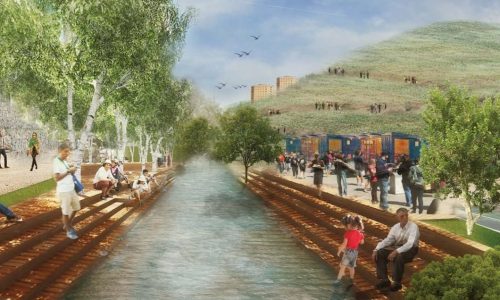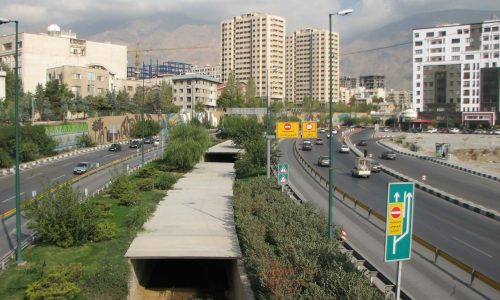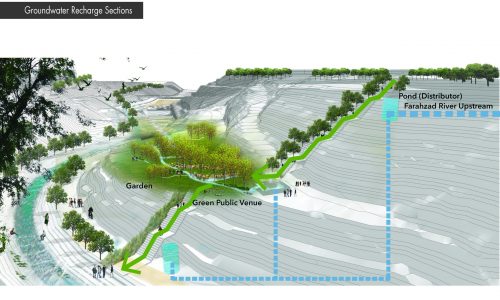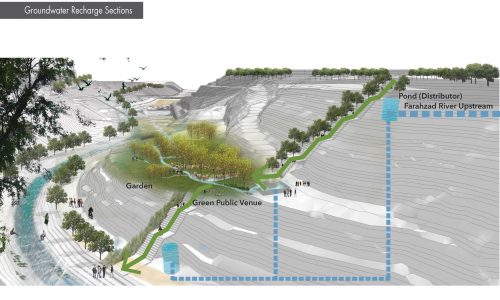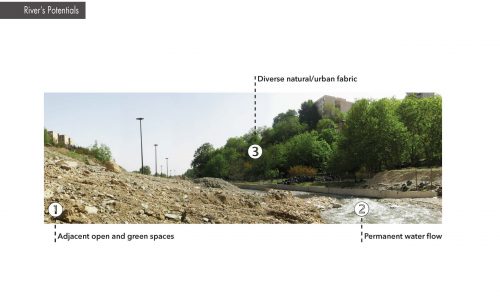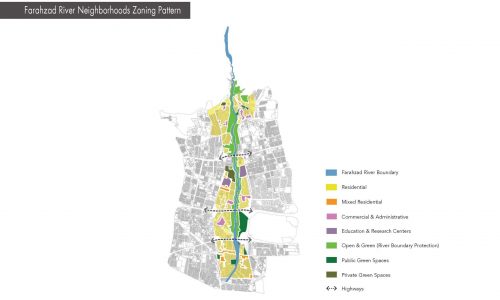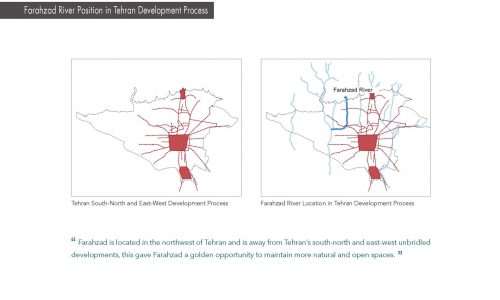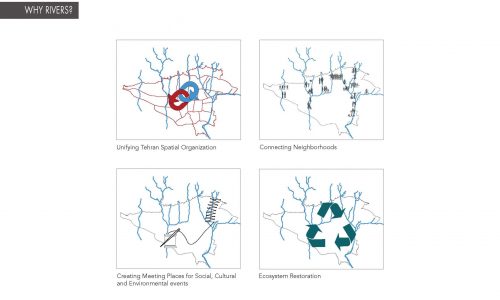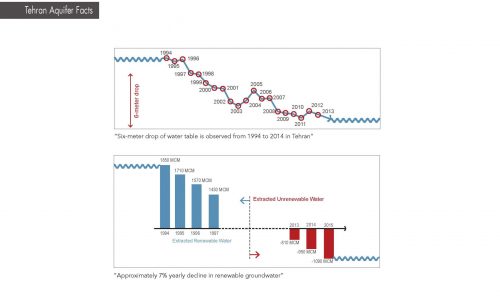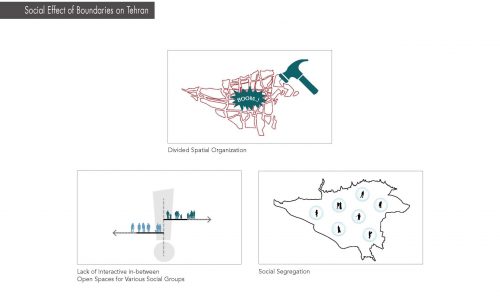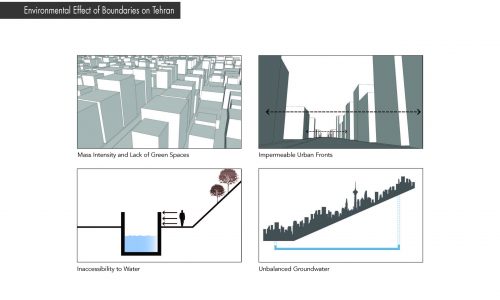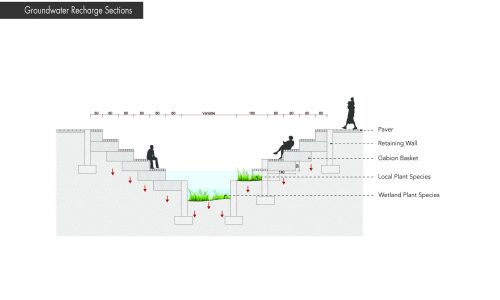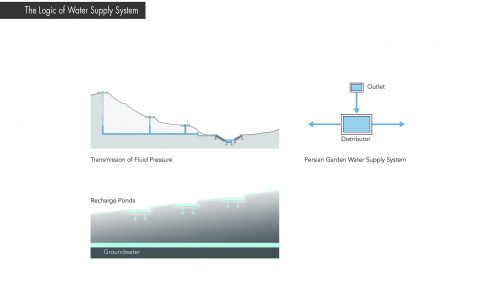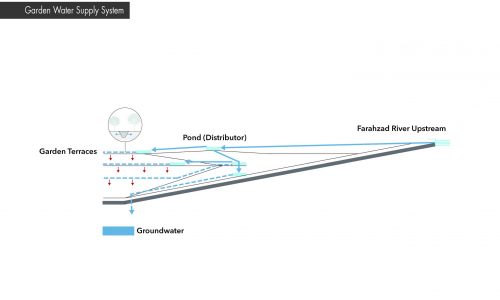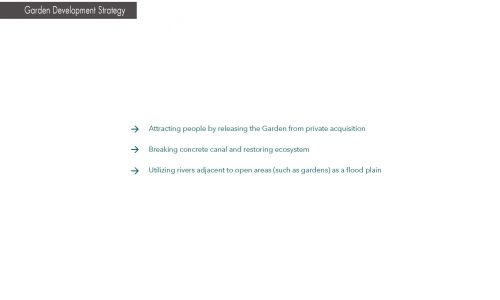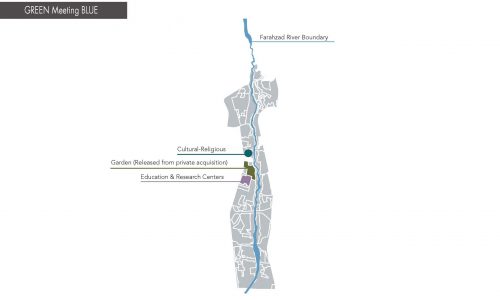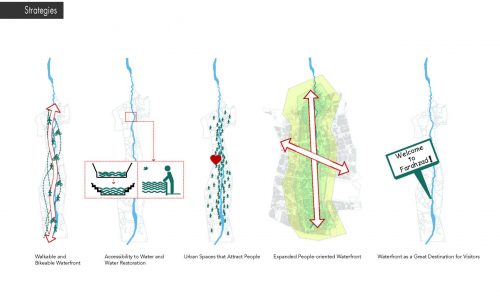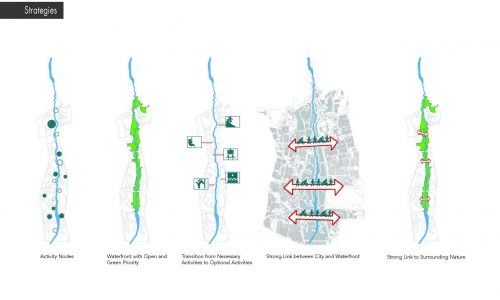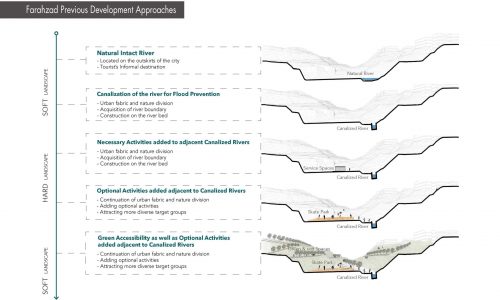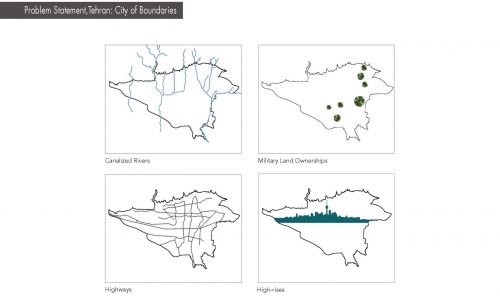International competition in the context of UN-HABITAT III Conference
Project Info
| Year: |
| Type: |
| Program: |
| Client: |
| Location: |
| Status: |
| Awards: |
| 2015 |
| Competition |
| Public Space |
| Journal Arch+ |
| Tehran, Iran |
| Completed |
| Winning project in the third category , Planetary Urbanism , The Transformative Power of Cities , International Competition , Awarded by Journal ARCH+. |
| Partners in Charge: | Shadi Azizi, Hamidreza Mousavi |
| Lead Designer: | Mohammadmahdi Zanjanian |
| Design Team: | Hesam Tavassoli, Milad Heidari, Siavash Ghorbani Jazi, Arezoo Khamesi |
| Social & Urban Studies: | Alireza Delpazir |
| Environmental Studies: | Seyed Ali Chavoshian, Shadnaz Azizi, Nima Vahedi, Alireza Ghazizadeh |
Over the last 30 years the policies and the process of construction in urban manage-ment in Tehran, has been in such a way that has converted the social and environ-mental edges into boundaries. Tehran’s Highways, Canalized Rivers, and Military Land Ownership, as well as Municipal Regulation, are factors that destroy social and ecological borders of the city and create boundaries.
During the recent years, Tehran’s seven rivers were canalized for flood prevention, these concrete canals cause a restriction for water infiltration and inaccessibility to water.
Tehran’s Rivers have a great potential for breaking social and environmental boundar-ies, by unifying Tehran’s spatial organization, connecting neighborhoods, and creat-ing meeting places for social, cultural, and environmental events, also the rivers could play a crucial role in Tehran’s ecosystem restoration.
Tehran’s Green meeting Blue concept’s values are connectivity, diversity, and attrac-tiveness which indicate a connection between the river and the city, creation of social meeting places, and the restoration of nature. These values are proposed to be seen in various scales ranging from city’s spatial organization to local development ideas. In the city scale, this could happen by suggesting a meeting between Green (adjacent green and open spaces) and Blue (river) with consideration of principles that could be categorized as environmental Integration (Integrating urban fabric and water), Social Integration (Integrating different social, age, sex, national and religious groups), and Planning Integration (Integrating formal planning methods with participative planning methods).
In the local scale, a garden near the river boundary is selected among current river development areas, which has been recently released from acquisition. This garden is located in close proximity to educational and cultural nodes such as a university and a shrine which gives it a great opportunity to attract various social groups.
Due to the Garden’s trees and vegetation density, optimized water supply system is required, thus a system on the basis of natural rules namely “Gravitational Force” and “Transmission of Fluid Pressure” is proposed that provides the garden water supply. Also, this system creates a border where Green (access stairs and pathways to the garden terraces and the river front) and Blue (pond, water distributor, and the river) meet and shape a venue to attract people.

در طی چنددهه اخیر سیاستها و روند ساختوساز در مدیریت شهری تهران به گونهای بودهاست که لبههای محیطی و اجتماعی را تبدیل به مرزهای نفوذناپذیر کردهاست. اتوبانهای شهری، کانالهای بتنی اطراف رودخانه و مالکیتهای نظامی زمین در کنار ضوابط شهرداریها از جمله عوامل تخریب مرزهای نفوذپذیر اکولوژیک و اجتماعی و ایجاد مرزهای نفوذناپذیر هستند.
در طی سالهای اخیر رودخانههای هفتگانه شهر تهران جهت جلوگیری از بروز سیلاب کانالیزه شدهاند و این کانالهای بتنی عامل محدودیت نفوذپذیری آب و عدم دسترسی به آب شدهاند.
رودخانههای شهر تهران میتوانند با منسجم کردن سازمان فضایی شهر، اتصال همسایگیها، خلق فضاهای ملاقات برای رویدادهای اجتماعی، فرهنگی و محیطی باعث شکستن مرزهای نفوذناپذیر محیطی و اجتماعی شهرگردند. همچنین رودخانهها می توانند نقش پررنگی در احیا اکوسیستم طبیعی داشتهباشند.
کانسپت «تهران، ملاقات سبز با آبی» دارای ارزشهایی شامل اتصال، تنوع و جذابیت است که بیانگر اتصال بین شهر و رودخانه، خلق مکانهای ملاقات اجتماعی و احیا طبیعت است. این ارزشها در مقیاسهای مختلف از سازمان فضایی شهر تا ایدههای توسعه محلی در نظر گرفتهشدهاند. در مقیاس شهری، ملاقات شبکه سبز (فضاهای باز و سبز) و شبکه آبی (رودخانه) با در نظر گرفتن اصول یکپارچهسازی محیطی، اجتماعی و برنامه ریزی پیشنهاد شدهاست. در مقیاس محلی، از میان پروژههای اخیر توسعه رودخانه فرحزاد، باغی واقع در حریم رودخانه انتخاب شدهاست، که این باغ در مجاورت گرههای آموزشی و فرهنگی نظیر دانشگاه و امامزاده قرار دارد که امکان جذب گروههای مختلف اجتماعی را فراهم کردهاست. به دلیل تراکم درختان و پوشش گیاهی، سیستم بهینه آبرسانی برای باغ مورد نیاز است، کانسپت این سیستم بر پایه قوانین طبیعی مانند جاذبه و قانون ظروف مرتبطه و الهام گرفته از سیستم آبرسانی باغ ایرانی و بدون استفاده از انرژیهای تجدیدناپذیر ارائه گردیدهاست. همچنین این سیستم مرز نفوذ پذیری برای ملاقات شبکه سبز (پیادهراهها و پلههای ارتباطی بین تراسهای باغ و کرانه رودخانه) و شبکه آبی (حوضچههای تقسیم کننده و مجراهای آب) خلق میکند.

